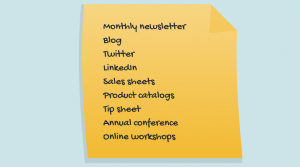
Many companies approach talent management with a finite (or win-lose) mentality. Finding more people and hiring the best talent is deemed critical to “win” the talent game. Although there may be some truth to this idea, such a limited view of talent management causes leaders to overlook the purpose of continuing the play (i.e., approaching hiring, developing, and retaining top talent as everyone’s job with no winner or loser).
This finite mentality is partly why employers are in the midst of the Great Resignation. In November 2021, according to the Labor Department, 3% of the workforce left their jobs. What’s worse, a December 2021 poll found that 23% of Americans plan on resigning in 2022, while 70% hoped to quit by February. This will be a major problem for companies having trouble hiring already.
Thankfully, all is not lost. You can turn the situation around by embracing an infinite mentality, overhauling your talent management strategies, and putting the employee experience at the center of your efforts.
So, how can you rework your talent management strategies and switch from a finite to an infinite mindset? Here’s where you can start.
Offer real and compelling benefits
The gap between what employees want and what employers provide is widening, and it’s affecting multiple industries. The industrial sector appears to be the hardest hit, with some organizations reporting over 100% employee turnover. Research from Slack’s workplace research organization found that 58% of knowledge workers are considering job moves in the next year.
To bridge the gap, pinpoint innovative reward policies and employee benefits proven to support employee retention and engagement. Policies should reflect employee needs, not those of the organization. Take a page from PwC’s book and talk to employees about how you can support them. The company not only gave team members an extra week of vacation last year, but it also currently gives workers $250 if they take off 40 consecutive hours before June 2022.
This talent management strategy might not work for every company, but some iteration could serve your operation well. Once you select a reward policy or employee benefit you’d like to invest in, assess the difference between your current and desired state. Create an action plan to implement the policy or benefit and work toward creating a more inclusive, engaged culture.
Create mutually beneficial relationships
The changing dynamics of the talent economy shifted power from employers to employees, and they’re willing to exercise their agency far more quickly than in previous markets. However, they’re less likely to do so if there is a mutually beneficial employer-employee relationship. According to Gallup, it would take more than a 20% pay increase to convince someone to abandon such a relationship.
Employee engagement isn’t just the responsibility of a manager. It required being in a certain state of mind. Engagement is a psychological phenomenon driven by employee expectations and motivations as well as good leadership and management practices. Take interest in what employees care about and what they enjoy doing. Ensure their interests and enjoyment align with their roles, particularly in a job market where talent is hard to find. You shouldn’t make the mistake of applying a one-size-fits-all approach.
Expand employment criteria to include employee satisfaction
Employers were once able to pick and choose from pools of qualified (and sometimes overqualified) applicants. It’s increasingly more important to hire based on learning agility and other power skills such as leadership, teamwork, adaptability, and problem-solving, to name a few. Each one of these attributes is essential to workplace success. And with these attributes, you can more easily train an employee for a given role.
That said, in light of current hiring difficulties, employers should also consider expanding employment criteria beyond education and skill requirements to measure whether candidates will enjoy the job. What do they want from employment? Do their interests or work preferences align with the position? What expectations do they have of an employer? What is driving your workers: Higher pay, development opportunities, flexibility, or something else entirely?
Make talent management a group effort
Communicate your commitment to the future from both the business and the employee perspective. Be as specific as possible about the role each employee plays in the overall performance of the company.
Don’t forget to engage different channels to share this message. Far too often, business leaders rely on town hall meetings to relay such information. While effective, each employee has their own preferences for communication—whether it is by email, phone, print, text, or social. By continually sharing the good news in different ways, you can cast a wide net and show consideration for employees.
Most organizations haven’t considered the role they play in the Great Resignation. Fundamentally, there needs to be an entire makeover of how leaders conceive talent management. It’s only then that companies can alleviate today’s retention and talent acquisition difficulties.
Dr. Dan Harrison is the founder and CEO of Harrison Assessments.
Fast Company , Read Full Story
(12)









